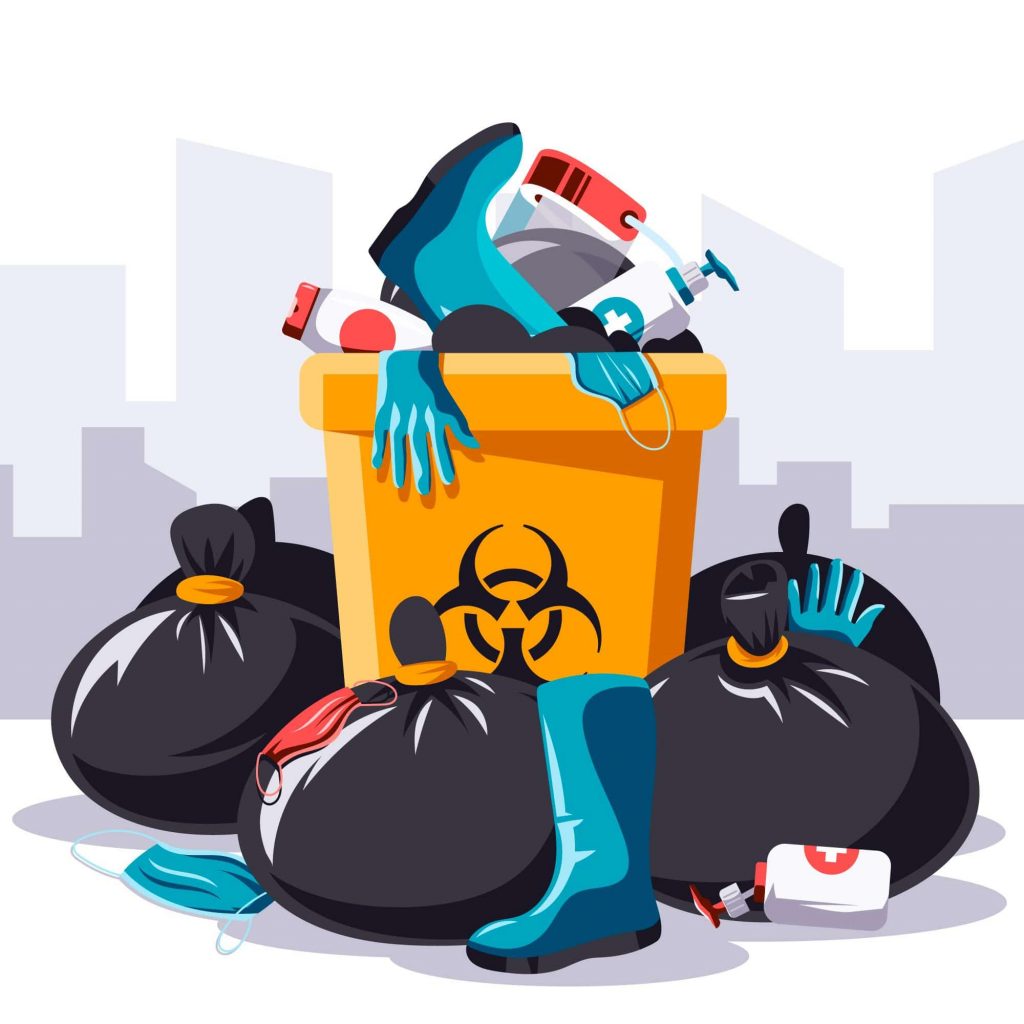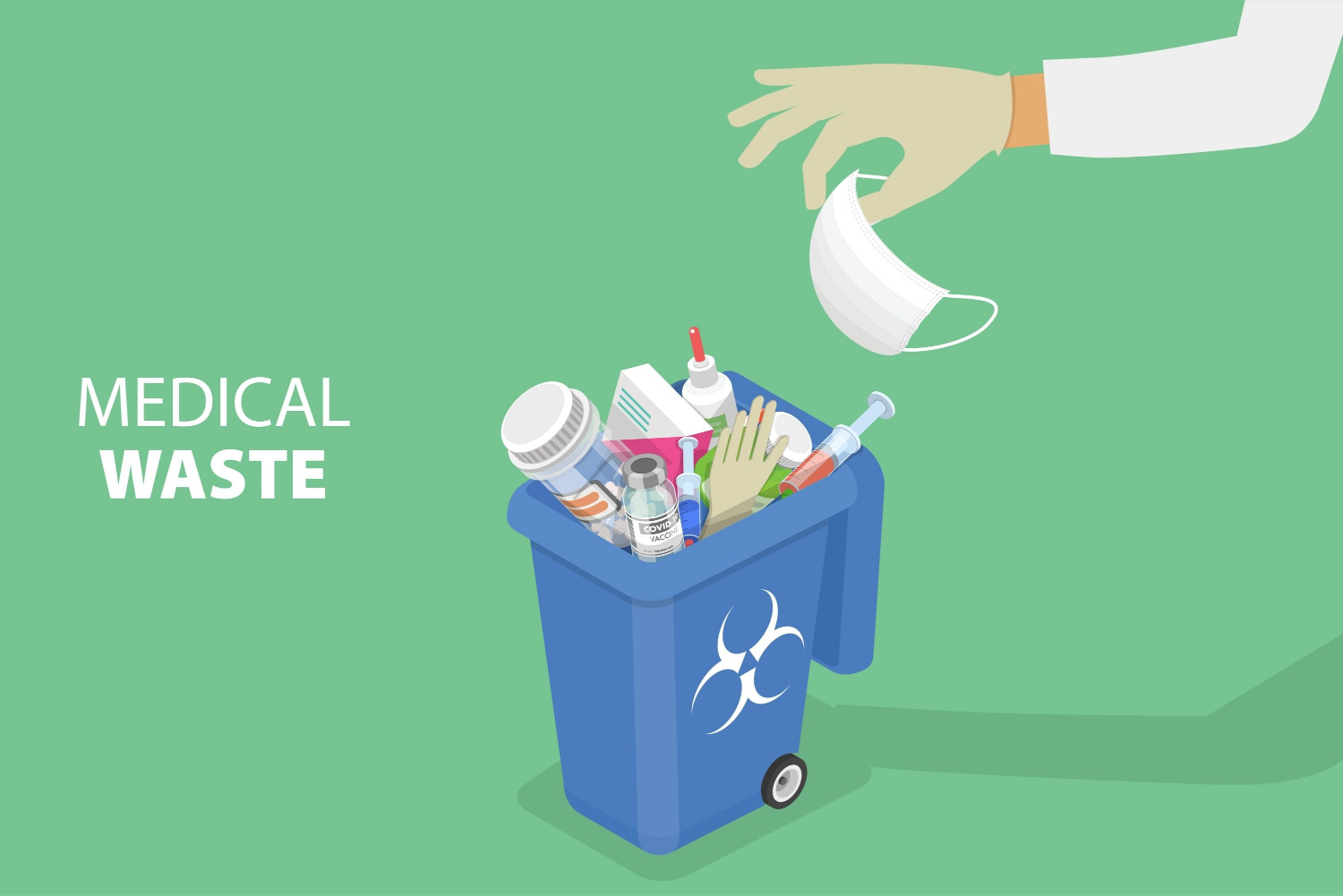Best Practices for Medical Waste Administration
Medical waste monitoring is a crucial element of medical care facilities' procedures to make certain the safety of clients, staff, and the environment. Implementing finest methods in clinical waste management is necessary to decrease the risks associated with hazardous waste.

Segregation and Categorization
In the field of medical waste monitoring, correct partition and categorization are vital practices for guaranteeing the reliable and safe disposal of healthcare-related materials. Clinical waste is generated from various sources, consisting of healthcare facilities, centers, research laboratories, and other medical care centers. It is composed of a vast range of things, such as needles, syringes, plasters, handwear covers, and pharmaceutical waste.
Partition includes the systematic separation of various types of medical waste based on their attributes and potential dangers. Sharps waste, such as needles and blades, must be put in puncture-resistant containers to protect against injuries and the spread of contagious conditions.
Classification is the procedure of classifying medical waste into different classifications based on its possible dangers. These groups might include infectious waste, contaminated materials, pharmaceutical waste, and basic waste. By categorizing waste, medical care facilities can establish the ideal disposal methods and make certain compliance with regional guidelines and guidelines.
Correct segregation and classification of medical waste not just protect the health and wellness and security of healthcare workers and the basic public however also add to the general performance and efficiency of waste management. It lowers the risk of accidents, lessens ecological influences, and advertises responsible waste disposal practices.
Appropriate Storage and Labeling
To guarantee the reliable and safe disposal of clinical waste, health care facilities need to stick to proper storage and labeling methods. WasteX Medical Waste Disposal. Proper storage space and labeling play an essential duty in maintaining the stability of medical waste management systems and securing the wellness and security of health care employees, people, and the public
When it involves storage space, it is important to have marked locations particularly designed for different kinds of medical waste. These locations must be protected, well-ventilated, and furnished with proper containers that meet regulatory standards (medical waste removal). Segregation and classification of waste ought to additionally be taken right into consideration to stay clear of cross-contamination and prospective threats

Routine tracking and assessment of storage space locations and containers are important to recognize any type of problems or offenses. Team must be trained on appropriate storage and labeling methods, highlighting the significance of compliance with protocols and laws.
Safe Transportation and Handling
Making sure the safe and secure and correct transportation and handling of clinical waste is essential for maintaining the stability of waste management systems and protecting the health and wellness of all entailed. Medical waste, which consists of things contaminated with transmittable materials, pharmaceuticals, and other unsafe substances, need to be transferred in a manner that protects against leakages, spills, and possible contamination.
It is vital to make use of puncture-resistant and watertight containers that are specifically made for medical waste. In addition, waste ought to be segregated based on its nature and kind to prevent cross-contamination.
During transport, it is very important to make certain that waste containers are safely secured and saved in a secure manner. Autos used for moving clinical waste needs to be outfitted with suitable safety and security attributes, such as spill control systems, to minimize the threat of any kind of spills or leakages. Motorists need to receive training on proper handling and emergency situation action procedures to efficiently resolve any unforeseen cases.
Additionally, the transportation and handling of medical waste must conform with all relevant laws and standards established forth by regional, state, and government authorities. WasteX Medical Waste Disposal. medical waste disposal service. Routine inspections and audits must be performed to examine conformity and recognize any type of areas for improvement
Compliance With Regulatory Guidelines
Maintaining conformity with regulative standards is necessary for efficient medical waste monitoring. These guidelines are put in place to shield public health and the environment by making sure that clinical waste is effectively dealt with, treated, and disposed of. Compliance with governing guidelines aids to stop the spread of contagious diseases, minimize possible threats, and lower the general effect of clinical waste on the environment.
To achieve conformity, healthcare facilities should stay notified regarding the specific regulations controling medical waste administration in their territory. These laws might differ from country to country, and even within different states or regions. It is necessary for healthcare centers to have a thorough understanding of these guidelines and to carry out ideal methods and methods to ensure conformity.
One trick aspect of compliance is the correct segregation and labeling of different kinds of medical waste. This consists of dividing sharps from various other waste, as well as categorizing waste based on its possible risks. Health care facilities need to also make sure that clinical waste is stored in ideal containers and that these containers are appropriately classified and secured.
Moreover, conformity with regulative standards needs health care centers to develop proper training and education programs for team participants associated with medical waste monitoring. This consists of offering training on waste partition, taking care of, and disposal procedures, in addition to the proper use of individual safety devices.
Routine surveillance and audits are also important to ensure recurring compliance with regulatory standards. This entails carrying out normal inspections of waste storage locations, documenting waste administration procedures, and preserving records of garbage disposal.
Efficient Disposal Methods
Healthcare centers have to utilize effective disposal techniques for proper administration of clinical waste. Incorrect disposal of medical waste can position severe wellness and ecological risks. There are several approaches that can be utilized to effectively get rid of medical waste, making sure the security of medical care employees, individuals, and the basic public.
One typically made use of technique is incineration. Incinerators can securely shed medical waste at heats, lowering the volume and ruining any possibly hazardous microorganisms. Nonetheless, incineration can be costly and might release damaging pollutants right into the air otherwise correctly regulated.
An additional method is autoclaving, which entails subjecting the waste to high-pressure steam. This process eliminates microorganisms, infections, and various other bacteria, providing the waste safe for disposal in regular waste streams. Autoclaving is a environmentally friendly and effective approach, yet it requires specialized devices and experienced workers.
Chemical sanitation is also utilized sometimes, where liquid chemicals are used to the waste to decontaminate it. This method is much less typically utilized due to issues about the effectiveness of chemical disinfection and the possibility for chemical deposits to pollute the setting.
Along with these techniques, healthcare centers need to additionally apply proper partition, product packaging, and labeling of clinical waste to guarantee its safe handling and disposal. Normal training and education and learning of staff on correct waste monitoring methods are crucial to preserving efficient disposal techniques.
Verdict
In verdict, implementing ideal techniques for medical waste management is essential for guaranteeing the security of medical care workers, individuals, and the environment. By appropriately segregating and categorizing waste, keeping and labeling it properly, making certain risk-free transport and handling, following regulative guidelines, and utilizing effective disposal approaches, medical care facilities can efficiently manage and reduce the threats related to clinical waste. It is crucial for healthcare organizations to focus on and adhere to these ideal practices to preserve a risk-free and sustainable healthcare environment.
Clinical waste management is a crucial aspect of healthcare centers' procedures to guarantee the safety and security of patients, personnel, and the atmosphere. Executing finest techniques in medical waste management is necessary to reduce the dangers linked with harmful waste. These groups might include contagious waste, harmful waste, pharmaceutical waste, and general waste.In final thought, implementing ideal methods for clinical waste administration is necessary for making sure the security of medical care employees, people, and the setting. By properly segregating and categorizing waste, keeping and classifying it properly, making sure secure transport and handling, conforming with regulative guidelines, and Home Page employing effective disposal approaches, health care facilities can effectively handle and decrease the dangers linked with clinical waste.